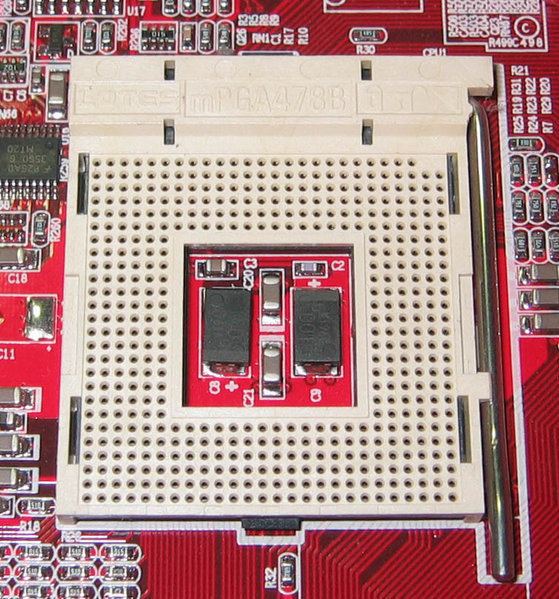Type PGA-ZIF Processor dimensions 35 mm x 35 mm | FSB protocol AGTL+ | |
 | ||
Chip form factors Flip-chip pin grid array (FC-PGA2 or FC-PGA4) FSB frequency 400 MT/s533 MT/s800 MT/s | ||
Socket 478 (also known as mPGA478, mPGA478B) is a 478-contact CPU socket used for Intel's Pentium 4 and Celeron series CPUs.
Contents
Socket 478 was launched with the Northwood core to compete with AMD's 462-pin Socket A and their Athlon XP processors. Socket 478 was intended to be the replacement for Socket 423, a Willamette-based processor socket which was on the market for only a short time. Socket 478 was phased out with the launch of LGA 775.
Technical specifications
Socket 478 was used for all Northwood Pentium 4 and Celeron processors. It supported the first Prescott Pentium 4 processors and all Willamette Celerons, along with several of the Willamette-series Pentium 4s. Socket 478 also supported the newer Prescott-based Celeron D processors, and early Pentium 4 Extreme Edition processors with 2 MiB of L3 CPU cache.
Celeron D processors were also available for Socket 478 and were the last CPUs made for the socket.
While the Intel mobile CPUs are available in 478-pin packages, they in fact only operate in a range of slightly differing sockets, Socket 479, Socket M, and Socket P, each incompatible with the other two.
Mechanical load limits
All socket (Pentium 4 and Celeron) have the following mechanical maximum load limits which should not be exceeded during heatsink assembly, shipping conditions, or standard use. Load above those limits will crack the processor die and make it unusable.
